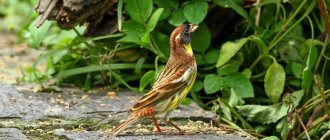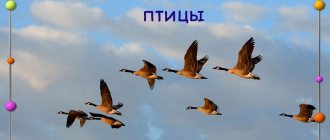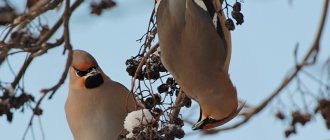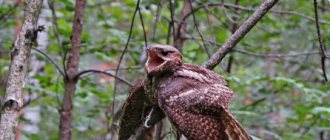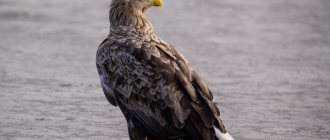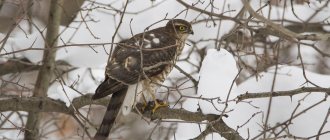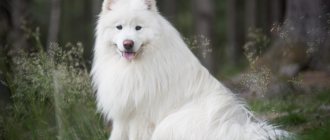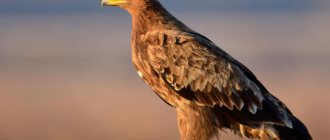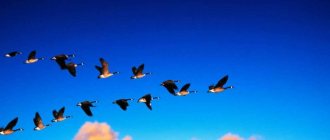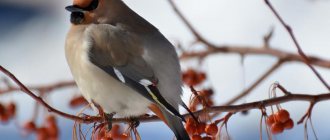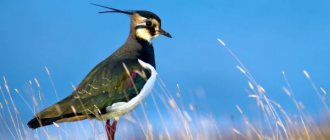The area of Russia is more than 17 million kilometers. The length from west to east is about 10 thousand. From north to south more than 4 thousand kilometers. The country's territory lies in four climatic zones (Arctic, subarctic, temperate with boreal and subboreal landscape types), which are divided into natural zones. This contributes to the diversity of the animal world, a significant part of which is birds. The article presents the main species of sedentary and migratory birds characteristic of each natural zone.
Pigeons - birds of Russian cities
The most common, glorified and often discussed bird of Russian cities by Russians is pigeons. On the one hand, she manages to “mark” all the monuments and city squares with fountains, on the other hand, her favorite bird, especially trained rare specimens released on embankments and near children’s amusement parks, with crests and lace tails.
There are more than 300 species of pigeons, so you can spend hours looking at the different colors of these city dwellers. They are white, gray, black, multi-colored with the same smooth and fluffy wavy plumage.
The bird is of medium size among Russian birds, but for urban birds it is considered one of the largest. In the Middle Ages, pigeons were domesticated, and the meat was considered very original on the tables of Europe and Asia. Today, despite the fact that there are many times fewer pigeon coops, pigeon meat can still be found on the tables of Russians. But at the same time, pigeons never made it into mass production, remaining a delicacy for amateurs.
Bright pigeon color
Pigeons nest in cracks, in the attics of multi-story buildings, driving their nests deep, away from human eyes. This is why we never see little pigeons, especially chicks in their nests. The pigeon's nest looks like a flat platform lined with branches. Eggs hatch in the middle of the platform, and subsequently the chicks grow up.
If you notice a pigeon brood, leave the area as quickly as possible so that the adult pigeons do not sense your presence and leave the nest with defenseless chicks. Even the unstable smell of a person can repel pigeons from their offspring, as this will be a signal of danger and destruction of the nest, as a result, the bird believes that it is better to build a new nest and give birth to new offspring without risking itself.
When pigeons leave the nest, they are fully formed, although smaller in size than their parents. This is why we do not see chicks of pigeons on city streets. In fact, we see them every day, it’s just that some seem large and “pot-bellied” to us, while others are small and thin. The latter are the newly fledged chicks.
It is also worth noting that pigeons do not nest at the same time. They have long adapted to the urban jungle and create offspring when a pair and a nest are formed, and not synchronously, at the onset of the season. The same pair of pigeons can produce up to 3-4 litters per year.
Pigeons are omnivores when it comes to food, and they eat whatever they find in the city. These can be insects, a variety of grains, bread crumbs, as well as leftover food in trash cans. In fact, the bird easily adapts to both conditions and climate, as well as to its diet. The enemies of pigeons are most often people, cats and dogs.
flock of pigeons
Crossbill
This bird of the finch family has a bent, crooked beak. Its structure is determined by its function. With its beak, the crossbill picks up grains from cones. At the same time, a characteristic click is heard. Hence the name of wintering birds
.
Despite the adaptability of the beak, it is not possible to remove all the pine nuts. Cones thrown by birds are cleaned up. Males of the species are red-brown, and females are gray-green-yellow. Birds become like this by the age of 3. As adults, crossbills do not exceed 20 centimeters in length and weigh about 50 grams.
The intelligence of ravens, by the way, is comparable to the development of 5-year-old children. Birds solve the same logical problems. One of the indicators of intelligence is the way it protects nests. Crows throw stones at enemies, lifting them in their tenacious paws.
Birds are unpretentious when it comes to food; they eat grains, vegetables, and bread. Birds often destroy the nests of other birds. But the favorite delicacy of ravens is carrion. There is a lot of it in winter, because not all animals can withstand the cold. Here are the birds
and
remain for the winter.
In years when food is poor, polar owls migrate to the forest-steppe zone. The bird is large, up to 70 centimeters in length. The bird gains 3 kilograms of mass. Harry Potter held about that much in his hand. The hero of JK Rowling's work often used the services of Boucli. That was the name of the white owl who served as a messenger for the wizard.
Sparrows - birds of Russian cities
Everyone knows Sparrow. It is with feeding the sparrows that a child’s acquaintance with birds begins. Unlike pigeons, a sparrow's wingspan does not frighten children, and children happily throw seeds and bread crumbs to the birds. The sparrow is considered to be as common a bird in Russian cities as the pigeon. It also lives in flocks and occupies vast areas with its population.
In our Russian cities, house sparrows are most common, but you can also see other species of birds. They feed on plant fauna, such as grains and cereals, bread crumbs, leaves and small berries. The adult has a very strong short beak, with which it can even break some types of nuts to get to the grains. Sparrows can also “steal” food from domestic animals. Cat sparrows are often caught using this trick.
Sparrow
Sparrows love to bathe in snow, puddles and dust, cleaning their feathers and protecting themselves from parasites. In adult life they practically do not fly, preferring to walk and select food on surfaces. But in case of need or danger, they easily take off and stay in flight for up to 10 minutes.
Sparrows nest both in pairs and in mass colonies, occupying all available places in the area. These can be cracks in houses, cracks under roofs, as well as holes and any free nooks and crannies located near human habitats. Nests are created with small branches, blades of grass, straw and mud/clay for holding together. After which they lay eggs and incubate for several weeks (11-13 days). Both parents feed the chicks, delivering food to the beaks.
After the chicks have flown into adulthood, the pair lays new eggs and hatches them again. Up to 3 broods per year. The most dangerous enemies of sparrows are cats. They are followed by dogs and people, and only then by birds of prey.
City sparrow
The most dangerous
Strong wings, agility, powerful paws, long claws, impeccable hearing and vision - nature has endowed birds of prey with all this. List of bird names
, which are the most dangerous and fight for their existence in all possible ways, and also hunt no worse than large predatory animals, looks like this:
Everyone knows that such birds exist
that cannot fly into the air. Fortunately, this does not in the least prevent them from leading a comfortable lifestyle and us admiring these creatures. There are several reasons why some birds cannot fly like all other birds. The first reason lies in the bones being too small and the lack of a keel, and the second is that the mass of some birds is too large for flight.
The well-known ostrich
cannot fly, but is an excellent runner due to its well-developed muscles and long legs.
It should be noted that this is the largest flightless bird on earth. The structure of ostrich wings is quite primitive and also has a loose structure. Although the wingspan
can reach several meters, this is not enough to lift into the air a body whose mass varies from seventy to one hundred and fifty kilograms.
Emu
Outwardly similar to the ostriches described above, however, many are smaller. Their weight can reach only fifty-five kilograms, and the height of the bird is about two meters. Emus are quite good runners, capable of reaching speeds of up to fifty kilometers per hour. Why can't they fly? The fact is that the wings of this bird are very small and poorly developed. An interesting feature is the presence of small claws at the end of each wing. Despite the inability to hide from predators in the air, emus are excellent at protecting themselves from many dangers with the help of strong legs and sharp claws.
Cassowaries
are also quite large and their weight can reach sixty kilograms. Their distinctive feature is their brightly colored head and neck, which give the bird a rather unusual and at the same time attractive appearance. The territories where they live are in New Guinea and on some Australian islands. They take second place in size, giving first place to ostriches.
A total of cassowaries
are non-aggressive and try to stay away from people and populated areas, however, if you approach them at too close a distance, the birds will begin to actively defend themselves, and their offender will be in trouble, because without making much effort, the cassowary can kill the attacker using its claw - dagger on the leg. Fortunately, collisions between humans and this large bird do not happen very often.
External component of rhea birds
makes them look like ostriches, however, there are also significant differences in their appearance. The head is more round in shape, and the feathers are much more beautiful than ostriches and in some individuals are painted white. Rheas can boast not only of their powerful legs, thanks to which they reach speeds of up to sixty kilometers per hour, but also of their ability to swim across fairly large bodies of water.
Kiwi
truly a unique bird.
She is very small
, with a long beak, ruffled plumage and a funny way of moving. This species cannot boast of acute eyesight, however, their hearing and sense of smell are excellent.
Swift - the bird of Russian cities
Everyone knows the swift, as it can be found in almost every city park in Russia. The population of swifts comes right behind pigeons and sparrows, and are considered one of the most common birds in Russian cities.
Haircut
The swift differs from other birds in that it practically does not walk and cannot swim, it can only fly. Also, if a swift falls into tall grass, it becomes easy prey for a predator, since it cannot quickly rise into the sky due to the grass, which does not allow its wings to flap.
Some swifts are sedentary birds, and some are migratory. At the same time, sedentary birds live further south, and migratory birds fly towards northern cities in the summer. Swifts feed on insects that they catch in flight. Also, while hovering, the bird can fall asleep for a while, since it spends most of the day in flight.
Swifts nest in holes, hollows and other openings they find. Then, once a season, they lay a clutch, which is incubated by the female and insured by the male. While the eggs are hatching, the female and male take turns feeding, and this is how they spend the next 17-27 days. After the chicks hatch, they are fed in the nest for up to 40 days, and later they are taught to fly and catch insects. It is also worth noting that swifts are not only long-lived, but also mate for many years, often for life.
Swift
Swallows - birds of Russian cities
Literature has taught us that with the arrival of swallows, real spring begins - warm, blooming, fragrant. In today's realities, swallows are not such frequent birds in Russian cities, and are increasingly found further south, even abandoning central Russia.
City swallow
A separate species lives in cities - city swallows. Small individuals, which live in pairs or small flocks, live closer to parks and almost never fly among high-rise buildings. Swallows also feel good among the private sector, choosing places in trees or under roofs.
In August-September, swallows fly south, wintering in warm countries. From May to August, the birds have time to build a nest and produce up to two clutches, which are looked after by the female. The male actively builds the nest and participates until the laying of eggs is ready, after which he can fly both to his own nest and to neighboring ones. Also, the male can leave his clutch with the female and go build a new nest with another female. The female incubates the eggs, but when she flies to stretch her wings and find food, she is replaced by a male, and not always the one who was responsible for laying the eggs.
Swallows feed on insects that they catch in flight. In good clear weather, swallows circle in search of food at a height of 10-20 m above the ground, in windy weather, before rain, etc. swallows look for food below, descending and circling almost above the ground. It is from this feature that people have a sign - swallows circle above the ground when it rains.
The enemies of swallows are falcons - predators that catch them during the flight, and parasites, fleas and ticks, actively multiplying on the bird, killing it, and once in the nest, they can destroy the young offspring.
Martin
Chizh
Considered migratory. However, some siskins remain for the winter in Russia. Birds are ready to survive the winter here next to non-freezing reservoirs. Birds make nests in the roots of trees nearby.
Small birds camouflage their homes so skillfully that they became heroes of the legend of the invisible stone. Our ancestors believed that such a crystal was placed under the nest, hiding it from prying eyes.
Wintering species also include hazel grouse and partridges. They warm themselves by burying themselves in snowdrifts. Under the snow, the birds look for food - last year's grains and herbs.
Black grouse even uses snow as a warm place to sleep
In severe frosts, birds try to avoid flying. The body area increasing when the wings are open leads to greater heat loss. The bird risks freezing instead of catching prey or getting to places with better weather.
Starling - a bird of Russian cities
Starlings are the birds that are best cared for by schoolchildren during the cold season. During labor lessons, birdhouses are built, and dads climb higher on a tree to nail a finished birdhouse for their favorite tricksters. And a little lower, they always hang a feeding trough and a drinking bowl, which is regularly replenished with new provisions.
Starling
Starlings are beautiful birds, with green iridescent plumage and black shiny wings. Birds of medium size, reaching 100 g in weight. In birdhouses, crevices, attics, etc. Starlings make their nests from straw, small twigs, moss and fresh leaves. After which both parents lay eggs and hatch the chicks. Starlings take turns feeding in order to maintain a constant temperature in the nest on the eggs and not be exhausted from hunger for two weeks. After which both parents are responsible for feeding the chicks.
It is worth noting that starlings, with their chirping, constantly communicate with the rest of their relatives, maintaining contact and reporting about food, predators, weather changes, etc. That is why starlings are considered the noisiest city birds.
The diet of starlings includes insects, especially for feeding young chicks. Later, for older individuals, there are also inclusions of grains, seeds, leaves and grass. Grass and leaves often act as medicine for diseases, which birds use intuitively. The enemies of urban starlings are cats and dogs, as well as birds of prey that periodically fly into cities.
flock of starlings
Petrel-like
The order includes long-winged and short-tailed seabirds.
A characteristic feature is the special structure of the beak.
The nostrils are extended forward in the form of horny tubes, which are located along the surface of the beak. Hence the second name of the order - tubenoses.
They spend most of their time above the sea, returning to land only for nesting. Long and narrow wings allow birds to fly or soar over water without landing. They feed on plankton, fish, carrion, attack living small birds and destroy nests.
The most famous representatives are albatrosses and petrels.
storm petrels
Less known are storm petrels, small (20-50 g) seabirds.
The name comes from the colloquial word - to die; in the old days birds were considered the souls of dead sailors.
They live on the Pacific coast. They feed on plankton, fry or fishing waste. Therefore, at night you can see an interesting sight - flocks of storm petrels flocking to the light of ships.
Wagtail - a bird of Russian cities
High legs deftly and quickly running across the lawns of parks, a gray breast and a long black tail - this is all about the wagtail, which, although rare, is a bird of Russian cities. By the way, the wagtail has been spotted in all corners of our planet and can be seen both in the north and in the south of the country.
As soon as a male and female pair up, they nest to form offspring. The female chooses a place for the nest and begins construction; the male is present and helps, but is not the key in creating a place for the future offspring. After creating a nest, the female lays eggs and incubates them alone, and the male is responsible for supplying food to the female, but not always. If the male does not support the female while incubating the eggs, the female is forced to leave the nest in order to find food and returns to the eggs. Sometimes, the male can insure her in hatching eggs, but this is an exception to the rule. During the season, one pair of birds hatches 2-4 broods.
Wagtail
As soon as the chicks appear, both parents join in the feeding and feed the babies for about two to three weeks. The wagtail practically does not fly, doing this solely to move to a new place of food or when danger arises. Almost never sits on trees, remaining on the ground in search of food. Birds feed on insects, grains and other flora collected from the ground. In cities, wagtails have several enemies: a person with a desire to catch a beautiful bird, cats and dogs, as well as all flying predators. That is why the bird population has been rapidly declining and is now protected throughout the world.
White wagtail
Temperate zone (subboreal landscapes)
It begins with a zone of mixed forests, where typical representatives of the taiga live:
- various species of woodpeckers (greater and lesser spotted);
- kingfisher;
- hazel grouse;
- black grouse;
- goshawk;
- tit;
- wood thrush;
- oriole;
- falcon
In the zone of deciduous forests (the so-called middle zone) there live many birds (predators, songbirds):
- waders (blackling, woodcock);
- pigeons (pigeon, dove);
- Sparrowhawk;
- beetle;
- buzzard;
- spotted eagles;
- kite;
- kestrel;
- tawny owl;
- long-eared owl;
- thrushes (songbird, mistletoe, fieldfare);
- green and crested woodpeckers;
- redstart;
- Robin;
- wryneck;
- goldfinch;
- tits (grenadier, blue tit);
- sparrows (field and house sparrows). These granivorous birds cause problems for grain growers;
- finch;
- martin;
- swift;
- pikas;
- lark (meadow, crested);
- gray heron;
- marsh sandpiper;
- great bittern (water bull or bull - a rare inhabitant of Chuvash reservoirs);
- coot;
- White Crane;
- nuthatch;
- flycatchers (gray, small, pied).
Numerous migrants from taiga and mixed forest zones. The river spaces are abundantly populated by waterfowl. In the European part, the red-headed duck with the brightly colored head plumage of the drakes is interesting; it migrates to the Kuban, but nests on the rivers of Siberia and the Urals.
Typical representatives live in the forest-steppe and steppe zones:
- steppe eagle;
- golden eagle (the largest of the eagles);
- numerous larks;
- bustard;
- gray partridge;
- quail;
- peregrine falcon;
- Falcon Sultan;
- wren;
- stilt;
- gyrfalcons.
Unusual and rare species live in semi-desert and desert zones:
- flamingo;
- pelicans;
- desert Eagle;
- Buzzard (the hawk family, the northernmost branch of the population. Listed in the Red Book. Each chick should be under the supervision of ornithologists);
- vulture
They look unusual. In mountainous areas, there are species characteristic of latitudinal zonality.
Redstart - a bird of Russian cities
In the shady parks of Russia you can meet one of the most popular birds in Russian cities - the redstart. Her singing enchants and soothes, giving comfort and peace to walking.
The redstart is an unprepossessing bird, with a light belly and a dark back, with a gray, almost black head and a fabulously beautiful voice. When it flies, its brownish-reddish tail resembles the rattling of a flame. The bird flies to Russia with the first signs of warming and flies south in September.
Common redstart
Upon arrival in the spring, the bird nests in any shallow crevices, in abandoned hollows, so that the nest is not visible from the outside. Next, the female and male lay eggs, and the female incubates the future chicks for 15 days. After which the chicks are fed for another 15 days and only after that they fly into adulthood. For the first week after departure, the female and male fly with the chicks and teach them how to feed, escape from danger, etc., after which the birds become independent adults.
The bird feeds on beetles, mosquitoes, flies and other living creatures, and is exclusively a predator. At the same time, she herself becomes prey for a hawk, falcon, stray cats, etc.
Redstart species
Birds of Russian cities: tips and recommendations
Mia : My mother taught me from childhood that birds are very important in nature, and at the same time they are defenseless. We always fed them and never drove them away from our house and garden. Now I have an inquisitive son growing up. Together we save crumbs, leftover seeds, cereals, etc., and when it’s time for evening walks in the park, we give it to the birds. The kid doesn't go to school yet, but he already knows all the local birds, their habits, and has even learned to distinguish chick pigeons from adults.
Alexander : The psychologist advised us to hang a feeder on the porch of the house and feed our younger brothers. Every time I came home from work, I went to the feeder and poured a new portion of food. Caring for others began to little by little bring me back to life. And suddenly redstarts settled in my yard, delighting me with their singing every day. It's only been a couple of months, but life has taken on new colors! Birds helped me bring my desire back to life.
Want to know more about birds? You may like our articles:
- Birds of Russian forests in the middle zone;
- Birds of the tundra and the Arctic: name, photo, brief description;
- Desert birds: names, photos, brief description.
